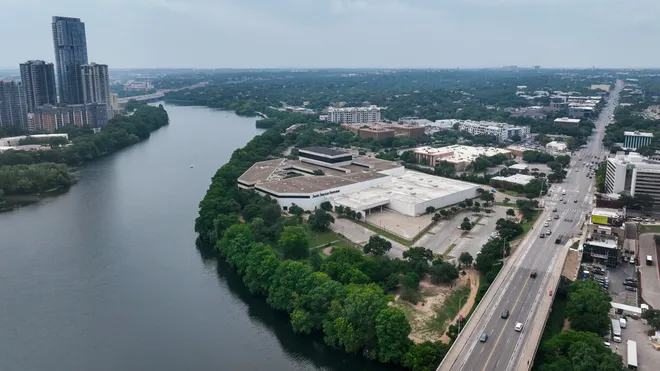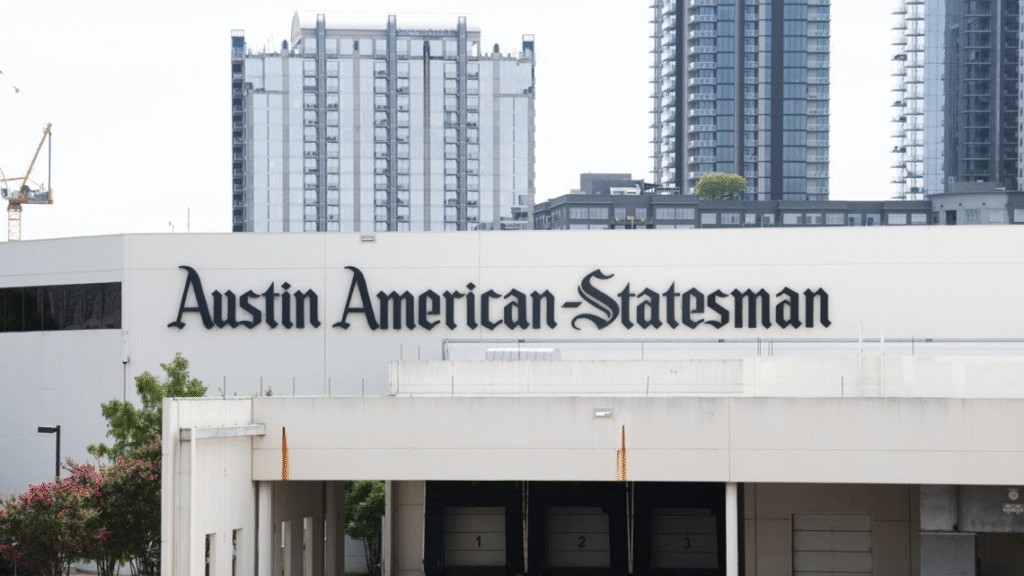Now Reading: Judge Upholds Austin Vote: 5 Reasons It’s Great News
-
01
Judge Upholds Austin Vote: 5 Reasons It’s Great News
Judge Upholds Austin Vote: 5 Reasons It’s Great News

Table of Contents
In a major legal and urban planning victory, a Travis County judge has upheld the results of an Austin vote that allows the redevelopment of the old Austin American-Statesman site. The decision has unlocked the path to transforming this underused land into a massive mixed-use destination on the south shore of Lady Bird Lake.
The ruling, officially titled “Judge Upholds Austin Vote,” confirms the city’s legal right to move ahead with the plan, which has faced criticism from some community groups. However, the court’s validation now gives developers and city officials the green light to push forward on the $2 billion project.
Background: What’s the Old Statesman Site?

The old Austin American-Statesman site, located near Congress Avenue and Lady Bird Lake, has remained largely inactive since the newspaper relocated. This 19-acre plot is considered one of the most valuable pieces of real estate in the city, both economically and symbolically.
In 2022, Austin voters approved a ballot measure to change zoning restrictions, allowing the redevelopment of the land for housing, commercial, retail, and public park spaces. The plan includes high-rise buildings, public trails, affordable housing units, and increased access to the waterfront.
But shortly after the vote passed, a lawsuit was filed questioning the legality of the election process. That lawsuit stalled the project—until now.
What the Judge’s Ruling Means
The case, which challenged whether the ballot language was misleading, was rejected by the court this week. In the ruling, the judge stated that the vote was clear, legal, and binding.
“Voters were presented with sufficient information to make an informed decision,” the judge wrote in the ruling.
This judicial stamp of approval ends nearly two years of legal limbo and allows developers, including Endeavor Real Estate Group, to begin the first phase of construction.
5 Positive Impacts of the Judge’s Decision
- New Public Access to Lady Bird Lake
One of the biggest wins is that the redevelopment plan includes over 13 acres of new parks and trails. These public spaces will open direct access to the lake that has been blocked off for decades. - Affordable Housing Options
The plan guarantees that at least 10% of all residential units will be offered at affordable rates, something city officials emphasized during negotiations. - Boost to Local Economy
With projected investments over $2 billion, the site is expected to bring thousands of jobs, both during construction and after, through office, retail, and hospitality development. - Downtown Traffic Solutions
The redevelopment plan includes new street infrastructure and public transport enhancements to reduce congestion, which has been a concern in downtown Austin for years. - Stronger City Tax Base
According to city estimates, property taxes generated from the redeveloped site could add over $30 million annually to Austin’s budget. That money can be redirected to schools, transportation, and public safety.
Opposition Still Remains
Despite the ruling, not everyone is happy.
Local neighborhood groups, environmental advocates, and some city council members have expressed concern over increased density, potential gentrification, and environmental impact on Lady Bird Lake.
Community advocate Susan Hays, who supported the lawsuit, said the project “still feels rushed and out of touch with public sentiment.”
Still, city leaders maintain that the public vote—now backed by a judge—makes the project’s direction clear.
“The voters have spoken. The court has confirmed it,” said Austin Mayor Kirk Watson. “It’s time to build a more connected, accessible, and thriving Austin.”
What’s Next for the Statesman Site?

With the legal roadblocks removed, Endeavor Real Estate and its partners can begin formalizing construction plans. The first phase could begin as early as 2026, depending on permitting and design finalizations.
The city will also begin public consultations about the final shape of the public park space to ensure it meets the needs of the broader Austin community.
Construction is expected to take 10 to 15 years in total, with different components—housing, retail, offices, and public areas—rolling out in phases.
Conclusion: A Major Win for Austin’s Future
The phrase “Judge Upholds Austin Vote” may sound like a line from a legal brief, but it represents something far larger for the city. It clears a key legal hurdle for a once-in-a-generation project that could redefine Austin’s downtown landscape.
While community debate will continue, the momentum now firmly lies with the city’s vision for smart growth, more housing, greater accessibility, and an economic boost right at the heart of Austin.
This redevelopment is more than just a real estate play—it’s a bold statement about what the future of Austin could look like.
Also Read – Japan REITs Rule Revision: 5 Big Benefits for Data Centers



















